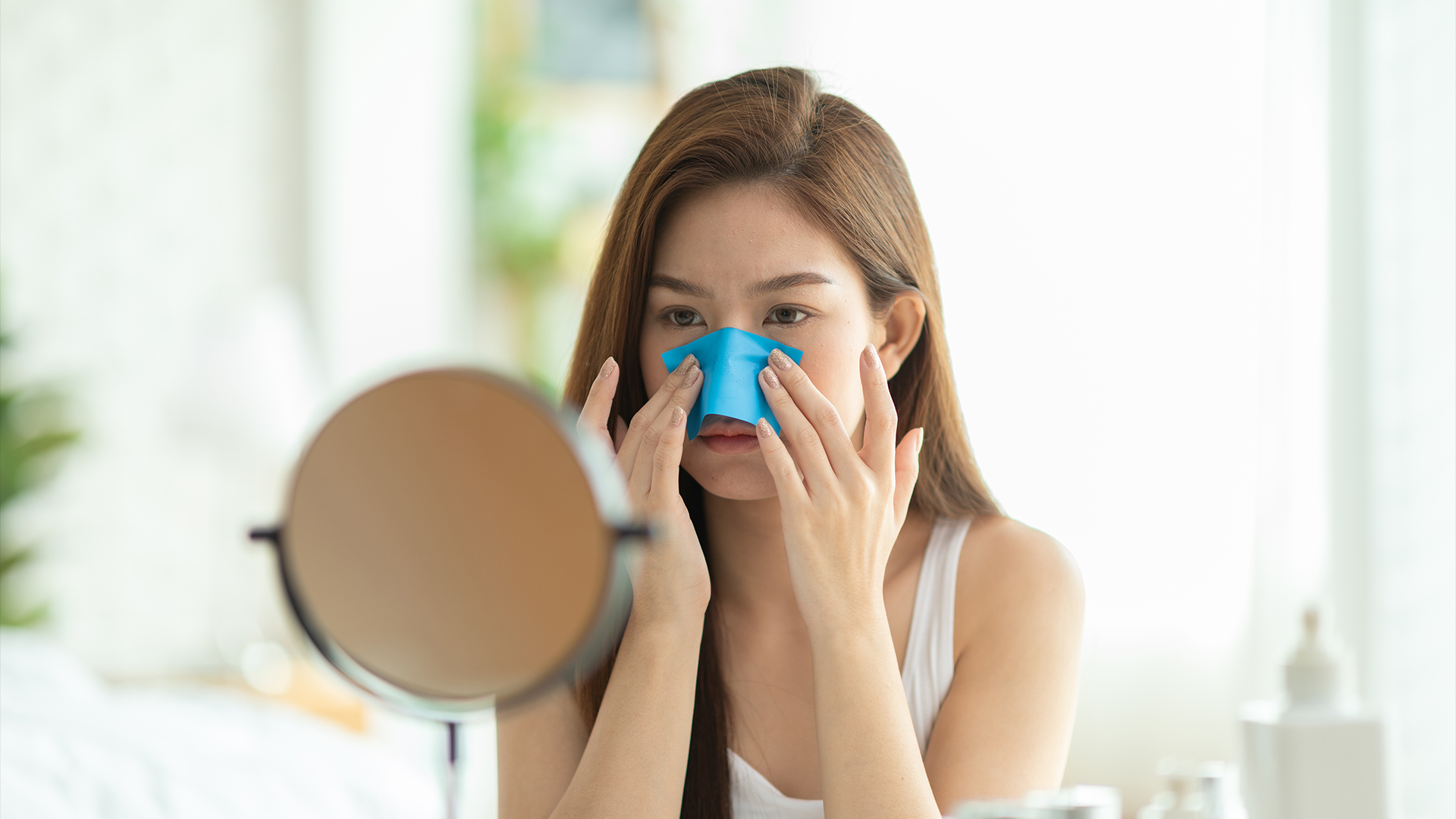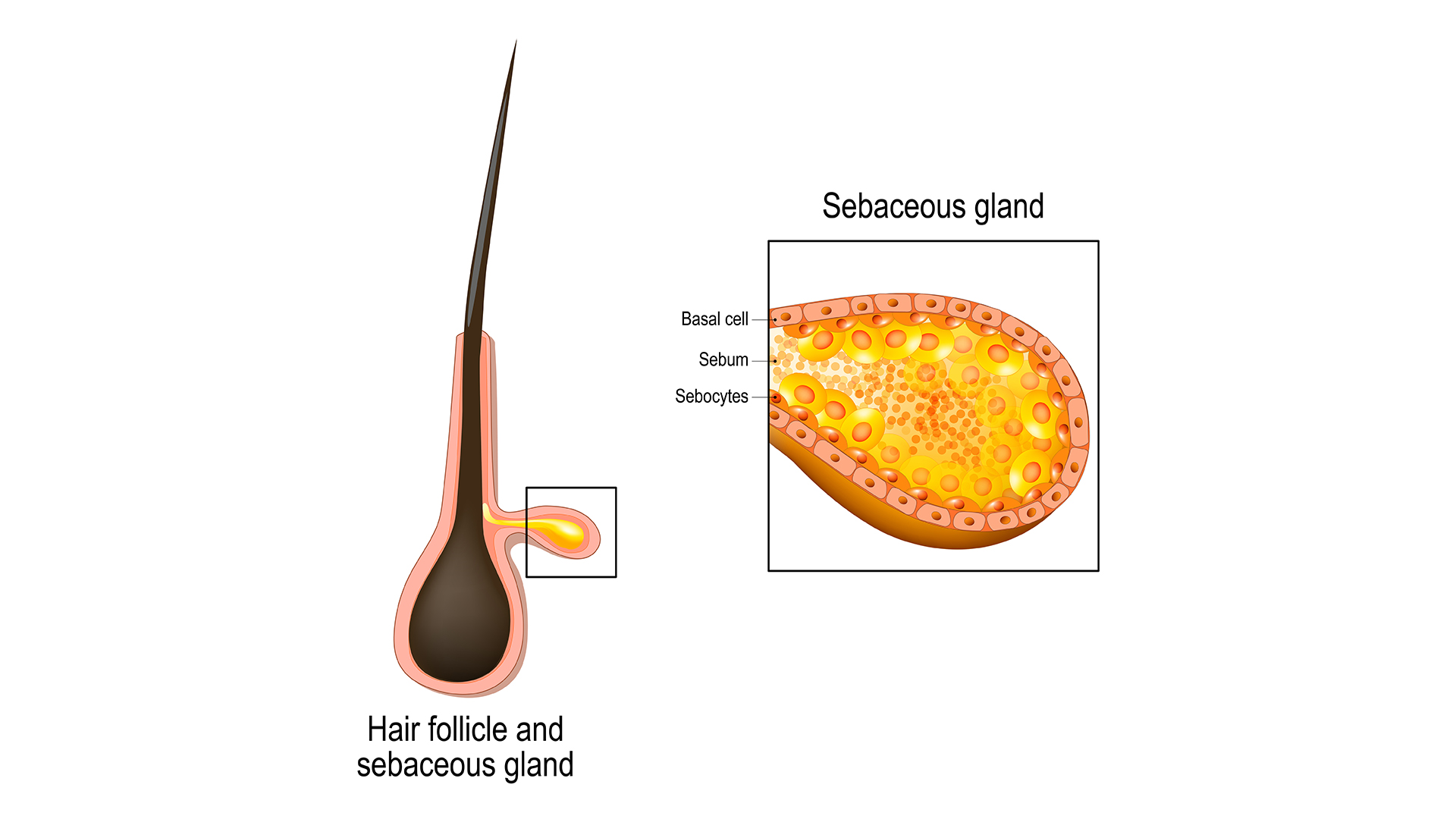Why is the 'T-zone' on your face so oily?
The so-called T-zone on your face tends to be extra greasy, and the reason lies in the number and activity levels of its oil glands.

The forehead, nose and chin, collectively known as the "T-zone," are notorious for being much oilier than the rest of the face. While this shine can be blotted away, excess grease can drive skin problems, including clogged pores and acne breakouts.
But why is the T-zone so oily?
The skin on your forehead, nose and chin have more sebaceous glands ― tissues that secrete an oily substance called sebum ― than anywhere else on the face. However, the exact amount of sebum produced by these glands can differ depending on your genetics, your age, the type of skin care products you use and your hormone levels, Dr. Gregory Papadeas, a board-certified dermatologist and former president of the Colorado Dermatologic Society, told Live Science by email.
Related: Do humidifiers help with dry skin?
To understand why the T-zone can get so oily, first you need to know how sebum is produced.
The greasy components in sebum are essential for keeping your skin hydrated, nourished and shielded from damage that could be caused by mechanical friction, such as rubbing or stretching. Sebum is much more than a protective coating, though — the waxy substance is packed with antimicrobial and anti-inflammatory compounds, making it an integral part of your skin's immune defenses, according to a 2011 review in the journal Dermato-endocrinology.
Sebaceous glands release this mixture through a complex process called holocrine secretion, in which cells fill with sebum and then self-destruct, spewing the substance onto the skin, according to the medical resource StatPearls.
Get the world’s most fascinating discoveries delivered straight to your inbox.
A person's genetics, age and hormones regulate the complex inner workings of sebaceous glands, Papadeas said. Studies suggest that the same genes that influence someone's susceptibility to acne may also be linked to high activity in the sebum glands, according to 2021 meta-analysis published in the journal BMC Medical Genomics.
Moreover, sebum excretion can increase in response to various hormones, including androgens, the group of hormones primarily responsible for driving the development of male traits. (Androgens are also present in females, albeit in much smaller amounts than in males.)
This is why the T-zone can get particularly oily during puberty, when the levels of reproductive hormones surge, and why it becomes less oily as we age, as those hormone levels abate, Papadeas said. Interestingly, the skin on the forehead, nose and chin may have more-sensitive androgen receptors than the rest of the face. That means they may produce more sebum in response to male reproductive hormones.
Other hormones that influence sebum production include those made by the thyroid, a gland in the neck, and growth hormone, which is produced by the brain's pituitary gland and helps govern height, bone length and muscle growth.
Environmental and lifestyle factors, such as being exposed to air pollution or following certain skin-care practices, can also stimulate the oil secretion in the T-zone, Dr. Hassan Galadari, a fellow of the American Academy of Dermatology and founder of the Galadari Derma Clinic in Dubai, told Live Science by email. For example, oil-based skin care products and chemical sunscreens can sometimes disrupt the function of the skin by clogging and inflaming the sebaceous glands, he said.
This article is for informational purposes only and is not meant to offer medical advice.
Ever wonder why some people build muscle more easily than others or why freckles come out in the sun? Send us your questions about how the human body works to community@livescience.com with the subject line "Health Desk Q," and you may see your question answered on the website!

Anna Gora is a health writer at Live Science, having previously worked across Coach, Fit&Well, T3, TechRadar and Tom's Guide. She is a certified personal trainer, nutritionist and health coach with nearly 10 years of professional experience. Anna holds a Bachelor's degree in Nutrition from the Warsaw University of Life Sciences, a Master’s degree in Nutrition, Physical Activity & Public Health from the University of Bristol, as well as various health coaching certificates. She is passionate about empowering people to live a healthy lifestyle and promoting the benefits of a plant-based diet.



